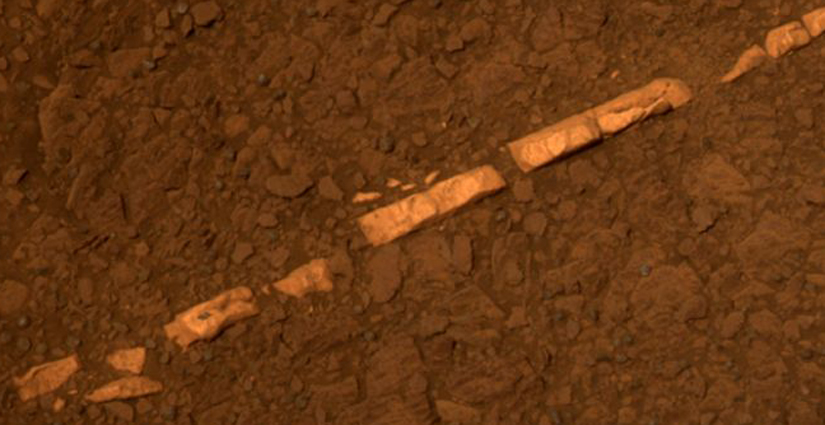
Eight years after landing on Mars to search for signs of past water, a NASA rover has hit paydirt with what appears to be a ribbon of the water-deposited mineral gypsum laced inside an ancient rock.
"This is the single most bullet-proof observation that I can think of that we've made this entire mission regarding the liquid water," Cornell University planetary scientist Steve Squyres, lead researcher for NASA's Spirit and Opportunity Mars rovers, told Discovery News.
Spirit, which is no longer operational, and Opportunity both turned up evidence of water-related minerals around their landing sites on opposite sides of Mars' equator, but researchers could not determine where the minerals came from.
"They've been moved around by wind. They've been mixing with other materials. It's a big, jumbled up, fascinating mess," Squyres said.
In contrast, the newly discovered deposit is threaded into an ancient rock on the rim of a large crater named Endeavour, which Opportunity is now exploring.
"This stuff formed right here," Squyres said. "There's no ambiguity about this.
"There was a fracture in the rock. Water flowed through it. Gypsum was precipitated from the water. End of story," he said.
Both the chemistry and the structure "just scream water," Squyres added.
Scientists hope to probe other fracture-filled rocks when Opportunity heads for new ground after the Martian winter.
A similar find may be in store for the team working with NASA's Mars Science Laboratory, a new, more sophisticated rover currently enroute to Mars. The robotic probe, nicknamed Curiosity, is scheduled to land inside a 96-mile wide impact basin called Gale Crater on Aug. 6.
The crater contains a layered mound of deposits three miles high.
"It's like a strip chart recorder of geologic history," planetary scientist Ray Arvidson, with Washington University in St. Louis, told Discovery News.
Whether Gale Crater contains gypsum remains to be seen, but Arvidson said it wouldn't surprise him, particularly in the clay-rich regions of the lower mound where water likely mingled with rock.
The research was presented at the American Geophysical Union conference in San Francisco this week.



I ain't fooled, that's a highway stripe ;-)
You see, Mars once had a thriving civilization, and then, next thing they knew, if you'd been there, you'd be:
"stalking elk through the damp canyon forests around the ruins of Rockefeller Center. You'll wear leather clothes that will last you the rest of your life. You'll climb the wrist-thick kudzu vines that wrap the Sears Tower. And when you look down, you'll see tiny figures pounding corn, laying strips of venison on the empty car pool lane of some abandoned superhighway."
Just being silly.
R.C.